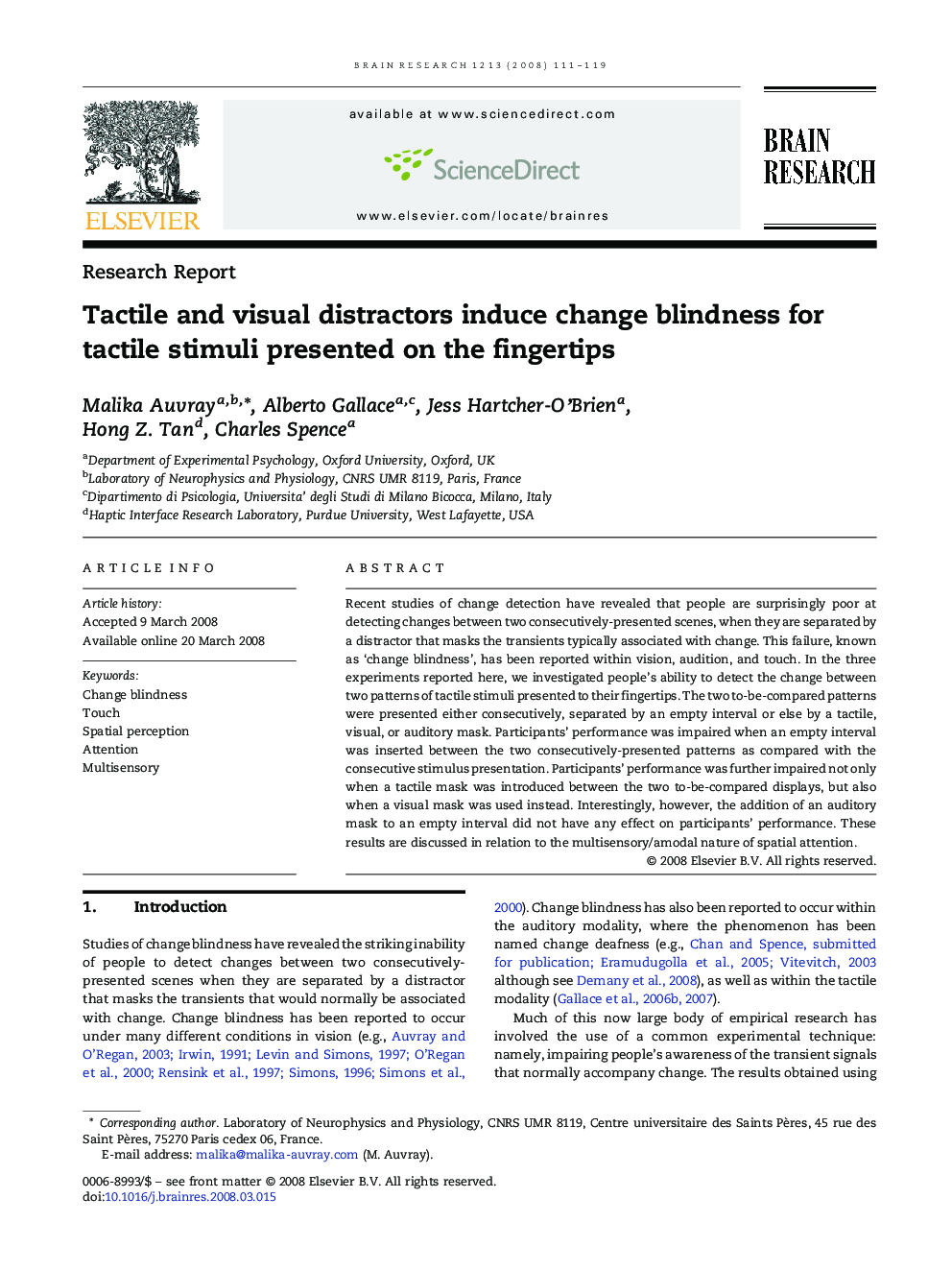| Article ID | Journal | Published Year | Pages | File Type |
|---|---|---|---|---|
| 4329621 | Brain Research | 2008 | 9 Pages |
Recent studies of change detection have revealed that people are surprisingly poor at detecting changes between two consecutively-presented scenes, when they are separated by a distractor that masks the transients typically associated with change. This failure, known as ‘change blindness’, has been reported within vision, audition, and touch. In the three experiments reported here, we investigated people's ability to detect the change between two patterns of tactile stimuli presented to their fingertips. The two to-be-compared patterns were presented either consecutively, separated by an empty interval or else by a tactile, visual, or auditory mask. Participants' performance was impaired when an empty interval was inserted between the two consecutively-presented patterns as compared with the consecutive stimulus presentation. Participants' performance was further impaired not only when a tactile mask was introduced between the two to-be-compared displays, but also when a visual mask was used instead. Interestingly, however, the addition of an auditory mask to an empty interval did not have any effect on participants' performance. These results are discussed in relation to the multisensory/amodal nature of spatial attention.
